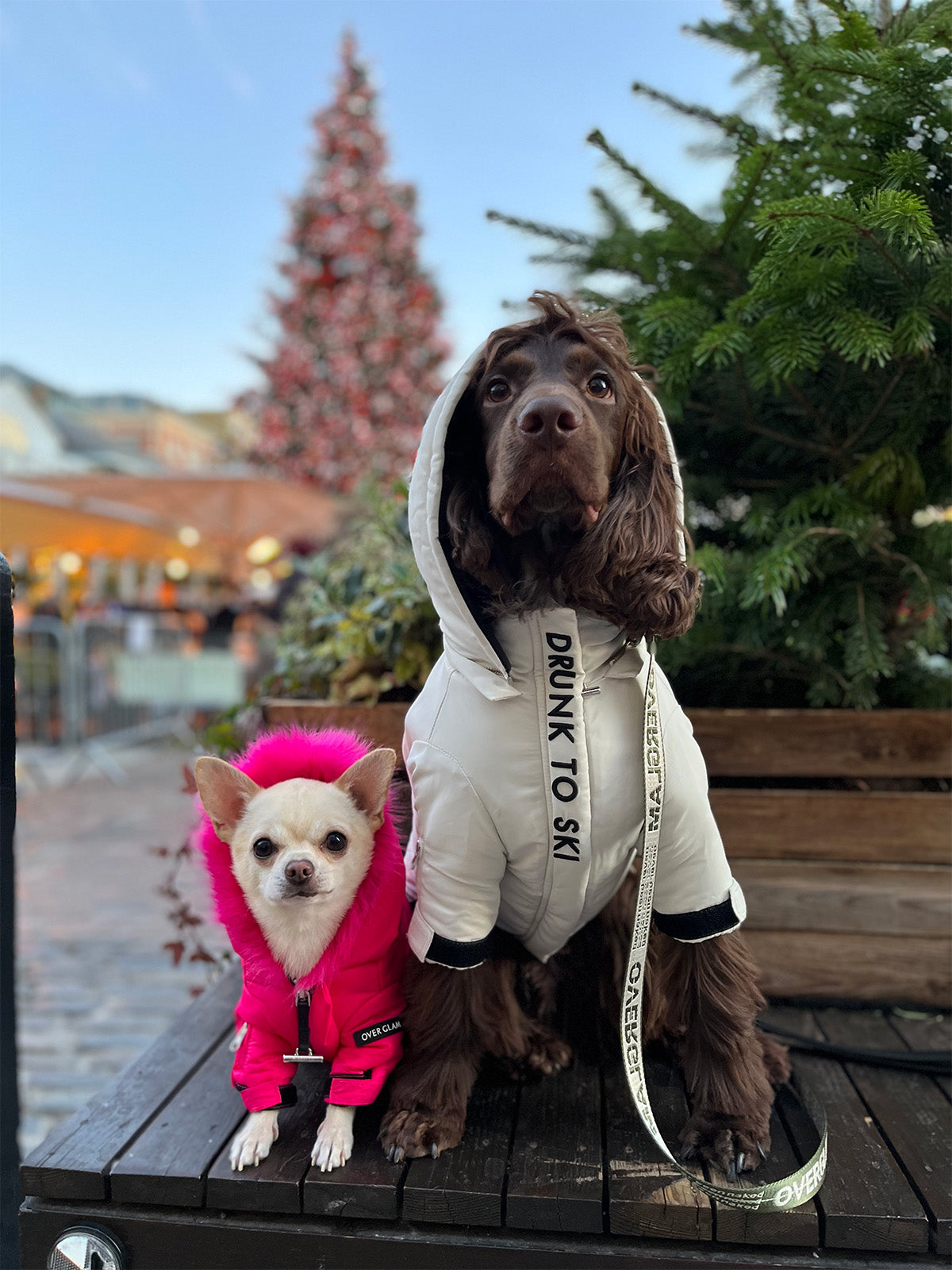Protect Your Pet This Winter: The Best Ways to Keep Your Dog Safe
Guest article by: mylifeboost.com

Puffer Jackets from our Autumn WInter 2021 Collection
Weather can present a variety of challenges throughout the year. Just like with people, dogs face particular difficulties during the winter months and can become injured or severely ill if they don’t receive the proper care. Over Glam explains the best ways to keep your dog safe during those chilly months:
Prevent and treat cold exposure
Keep your furry friend from freezing in low temperatures by preparing before the cold front comes to town. Firstly, think about the breed of your dog. Some types of dogs are more hot-blooded by nature and don’t need an excess amount of heat to stay warm all the time. Others, however, may need to stay indoors longer, wear an added layer of clothing, or have another heat source nearby simply because they get cold very quickly.
Next, consider your dog’s living conditions. Do they have indoor access most of the time, or are you wanting them to be a primarily outdoor dog? If the situation is the latter, ensure that the shelter you have for your dog provides enough security through severe cold, icy, and snowy conditions. This means making sure that the shelter contains a sloped roof and is small and insulated enough to allow your dog’s own body heat to keep themselves warm.
Also make sure that your pup is constrained to the property to avoid him from running off into the cold. This calls for having a fence, whether it’s a privacy fence or chain link. If you need to have a fence installed, make sure the contractor is licensed and insured, and that they provide a detailed estimate upfront.
Now, what can you do if your dog is already freezing from the frigid cold? Try encouraging stimulation on the outside of their body by massaging them, surrounding them with hot compresses or heaters, and giving them food to eat. Oftentimes, eating is one of the best activities for dogs exposed to cold weather because the digestion of food promotes a higher level of metabolic activity.
Raising their metabolism stimulates their circulatory system to burn more calories. Of course, if you believe the situation to be extreme, and if these home care practices don’t work, contact your veterinarian for more information.

Simba and Mocha wearing the Over Glam Ski Collection
Watch what your dog eats
Everyone knows that chocolate is a major hazard for dogs. The most harmful part about chocolate is a chemical alkaloid compound called theobromine. Theobromine is found in the cacao plant, so while all forms of chocolate are dangerous, darker chocolates that contain a higher amount of cacao are the worst for your dog. Theobromine is also found in other foods, such as tea leaves, which means your dog should stay away from caffeine-related substances as well.
When your dog ingests a small quantity of chocolate, PetPoisonHotline.com suggests it may only be necessary to induce vomiting to prevent them from experiencing side effects, such as diarrhea, seizures, or heart problems. However, if your dog appears to be in worse condition as time goes on, or you believe they need medical treatment, consult with your veterinarian immediately.
It’s also possible that your dog may be curious about eating antifreeze. Signs of antifreeze ingestion can include diarrhea, drunk-like behavior, trouble with balance, fainting, weakness, depression, and even seizures. If treatment isn’t given right away, this could lead to death. PetMD.com advises the immediate first aid of inducing vomiting by giving your dog a basic hydrogen peroxide solution. Always speak directly with your veterinarian before and after home care treatments.
Look at your dog’s fur
Sometimes, the bitter cold conditions in the winter can result in dry, flaky skin on dogs. Constantly being exposed to the air’s humidity, wind chill, and moisture changes can be quite damaging to your dog over time. Soos Pets recognizes that dandruff can be a symptom of dry skin as well.
The best ways to care for your dog’s dry skin at home include warm baths of water and nutritional supplementation. With bathing, it’s encouraged to limit the amount of chemical shampoos and soaps for your dog so that you don’t strip their skin’s natural oils. If you do wish to use a shampoo, always go for a moisturizing shampoo for sensitive skin. As for nutritional supplements, you should first make sure your dog is receiving a balanced diet. Consult with your veterinarian to test for low levels in a particular vitamin, mineral, or fatty acid that might be contributing to your dog’s dry skin.
Following these tips for your pup, from preventing exposure to the cold to ensuring their grooming and nutritional needs, will keep your furry friend safe all winter long.

